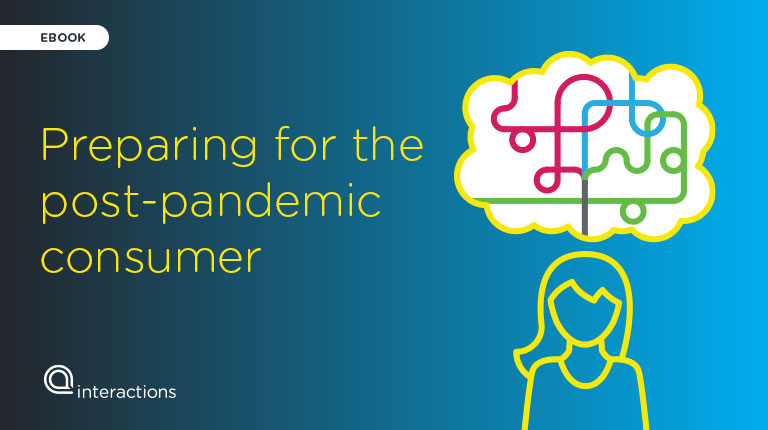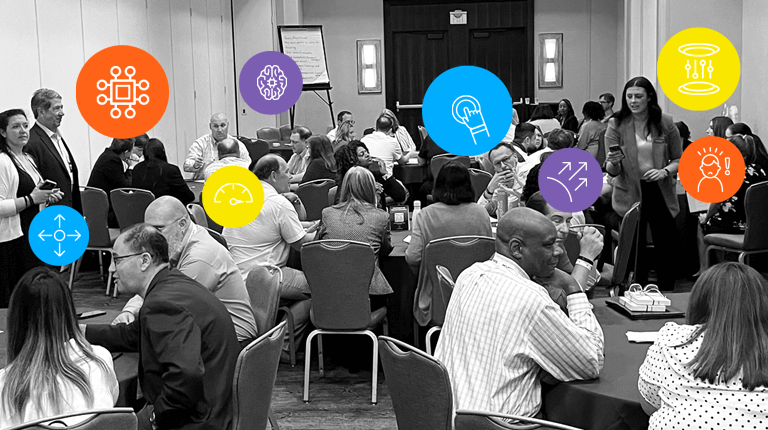Introduction
When thinking about preparing your business for post-pandemic, it’s interesting to reflect on the fact that we will all be post-pandemic consumers. Over the past year, everything we have done has shifted—from the way we socialize and conduct business, to the way we attend school and get tasks done.
When it comes to interacting with businesses, it’s probably safe to say that most consumers have had to rely on digital channels to get things done. As a result, we have all developed new habits and dependencies, some of which we may likely continue or at least incorporate into our post-pandemic world. For me, it was using a grocery delivery app. Pre-pandemic, I never would have considered it. I actually liked going to the store, picking my produce, browsing the aisles, and making impulse buys of the latest and greatest snacks. Then, I was forced to shift my shopping habits, and it was a game changer.
How could I have been missing out on this quick, easy, and convenient way to shop when I have such a busy schedule? I can save time, track my order, and chat with my shopper all from my phone. Although I have returned to grocery shopping in-person as of late, I will not hesitate to use this service on the weekends when my daughter’s schedule has me running or maybe on a day I would rather spend at the beach versus taking care of errands.
I’m sure that I’m not the first consumer to have this revelation—our lives would be less chaotic if we start to adopt digital channels. In a recent Interactions survey, the top three benefits consumers associate with the use of digital channels are convenience (74%), time savings (57%), and the ability to get things done outside business hours (55%). So although there are many consumers who are eager to get back to in-person interactions, many have recognized and become accustomed to the benefits of using digital channels and will most likely continue to rely on these channels in some way moving forward.
So what does this mean for businesses? How will consumer expectations change? What can you do now in order to meet consumer expectations in the post-pandemic world? Follow these four steps to make sure you are ready.
1) Evaluate your current state
Now is a good time to evaluate the channels you implemented under pressure to ensure you have a strong foundation that will support you now and that you can build upon in the future. A good question to ask is “Do we have consistency across our channels?” Implementing channels to check them off your list, without ensuring consistency, can result in a disjointed experience that can lead to customer frustration.
Another question to ask is “Do I need all of these channels?” Putting time, effort, and money into an infrequently used channel (or channels) does little for your business or for your customers. It’s better to have fewer channels and optimize those with high volumes, than to have more channels that are sub-par. If your customers aren’t using smart speakers to be in touch, it’s time to get rid of this channel and streamline one with more engagement.
Now is also a great time to be in touch with your customers and ask them what they want. Listen to their past experiences and hear what they expect from you moving forward.
Going through an evaluation process will help you better define and develop a long-term strategy that will allow you to achieve your business goals and increase your customer satisfaction.
2) Partner up across your organization
The pandemic not only created physical distance in our everyday lives, but it may have also created distance across your business organization. Because different departments often own different parts of the customer experience, they may have taken a siloed approach when getting things done during the pandemic. Now is the time to come together as a cohesive team and consider all customer journey touchpoints to ensure consistency for your customers.
3) Don’t leave human touch out of your digital experiences
According to a recent survey by Interactions, only 5% of people said that they would go back to solely using face-to-face interactions to contact a brand. This leaves the majority contacting businesses by digital channels. However, that doesn’t mean those who prefer a digital experience want one that is robotic and sterile. Therefore by adding a human connection—whether through human levels of understanding in automation or actual human agents—to your digital experiences, ensures a positive experience throughout the entire customer journey. Consider implementing advanced Conversational AI technology, like Intelligent Virtual Assistants, so customers feel as supported via self-service channels as they do when interacting with an actual human.
4) Choose your technology (and technology partner) wisely
Adding automation to your digital channels allows you to offer your customers a way to self-serve while decreasing costs for your business. However, before choosing a technology, it’s important to think not only about your business goals, but also the type of experience you want to deliver. For example, Conversational AI applications are becoming a popular way to automate digital channels but not all applications are created equal. The critical difference can come down to the vendor you choose. Just like applications, vendors differ in their type and area of expertise, scalability, and proven results. Make sure in your decision-making process you ask vendors detailed questions about experience, design, and referenceable results to ensure your application works exactly the way you want your brand to be represented.
Now is the time to lay the groundwork for the customer experience that consumers will demand post-pandemic. It’s important to remember that habits consumers developed around the use of digital channels are here to stay and at the very least will supplement their face-to-face interactions, if not fully replace them. Choosing the right technology to support these channels so you can provide a consistent experience with your brand is essential.
Read our new eBook to learn about what best practices to incorporate into your planning in order to meet consumer expectations post-pandemic.





